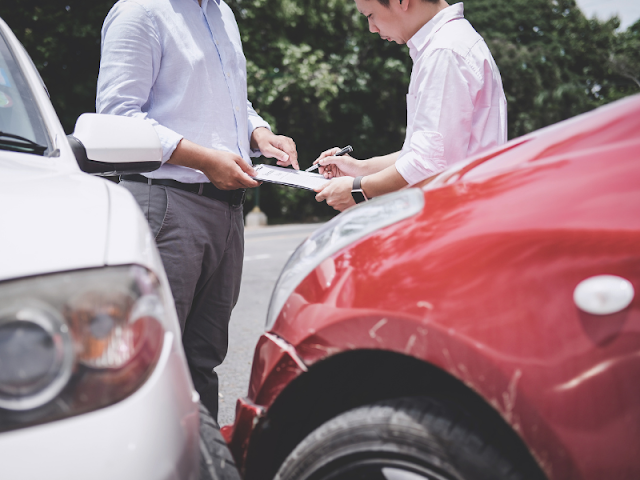Car Insurance Claims for Natural Disasters: What to Expect and How to Navigate the Process
Introduction:
Living in Brisbane, a city prone to natural disasters such as floods, storms, and bushfires, highlights the importance of having comprehensive car insurance coverage. In the event of a natural disaster, car owners rely on their insurance policies to provide financial protection and support for the damages incurred. This article focuses on car insurance claims for natural disasters, providing insights into what to expect when filing a claim and navigating the claims process. For residents in Brisbane, partnering with a top car insurance agency that specializes in natural disaster coverage ensures peace of mind and efficient claims handling.
Understanding Natural Disaster Coverage:
Before delving into the claims process, it is essential to understand the natural disaster coverage provided by car insurance policies. Comprehensive car insurance typically includes coverage for natural disasters such as floods, storms, hail, fire, and other weather-related events. However, it is crucial to review the policy details and confirm the specific coverage and exclusions pertaining to natural disasters.
Filing a Natural Disaster Claim:
a. Document the Damage: After a natural disaster, ensure your safety and that of others before assessing the damage to your vehicle. Take photographs and videos of the affected areas, capturing the extent of the damage from different angles. This documentation will serve as crucial evidence during the claims process.
b. Contact Your Insurance Agency: As soon as it is safe to do so, contact your car insurance agency, preferably a Brisbane-based top car insurance agency specializing in natural disaster claims. Report the incident and provide all the necessary details, including the date, time, location, and a description of the damages sustained.
c. Understand Policy Coverage: Review your car insurance policy to understand the specific coverage for natural disasters. Take note of any deductibles, limits, or additional requirements that may apply to your claim.
d. Provide Supporting Documentation: To support your claim, provide the insurance agency with the documentation gathered, including photographs, videos, and any other relevant evidence. This will help the agency assess the damages accurately.
e. Follow Claim Procedures: Work closely with your insurance agency to understand the procedures and requirements for filing a claim. Provide all requested information promptly and accurately to expedite the claims process.
Assessment and Settlement:
a. Inspection: The insurance agency will arrange for an inspection of your vehicle to assess the extent of the damages. This may involve an on-site inspection or requesting you to take your vehicle to a designated assessment center. The inspector will evaluate the damages and prepare a report for the insurance agency.
b. Claims Evaluation: The insurance agency will evaluate your claim based on the inspection report, policy coverage, and the terms and conditions outlined in your car insurance policy. They will determine the coverage applicable to the damages sustained and calculate the settlement amount.
c. Settlement Offer: Once the evaluation is complete, the insurance agency will provide a settlement offer. This offer includes the amount the insurance company is willing to pay to cover the damages, minus any applicable deductibles or excess amounts.
Also Read: Car Insurance for First-Time Buyers: What to Look For
d. Claim Acceptance and Disbursement: If you agree with the settlement offer, you can accept it and proceed with the necessary paperwork. Once all the paperwork is complete, the insurance agency will disburse the settlement amount, allowing you to initiate the repair process.
FAQs:
Car insurance policies differ in their coverage for natural disasters. It is crucial to review your policy and confirm the specific coverage for floods, storms, hail, fire, and other weather-related events. A Brisbane-based top car insurance agency specializing in natural disaster coverage can guide you through the policy details and recommend suitable coverage options.
If your car is deemed a total loss, meaning the cost of repairs exceeds the vehicle's value, your insurance policy may provide coverage for the actual cash value (ACV) of the car. The insurance agency will assess the ACV based on factors such as the age, condition, and market value of the vehicle. They will then provide a settlement offer based on the ACV, minus any applicable deductibles or excess amounts.
Most car insurance policies allow you to choose your preferred repair shop. However, some policies may have a list of approved repairers that you must select from. Discuss your options with the insurance agency and ensure that you have the flexibility to choose a reputable repair shop that meets your needs.
Conclusion:
Filing a car insurance claim for damages caused by natural disasters requires thorough documentation, prompt communication with your insurance agency, and understanding the terms and coverage of your policy. Partnering with a Brisbane-based top car insurance agency that specializes in natural disaster coverage ensures that you receive the necessary support and guidance throughout the claims process. By following the outlined steps and adhering to the requirements set by your insurance agency, you can navigate the claims process smoothly and secure the financial protection needed to recover from the damages caused by natural disasters.
Q1. Will my car insurance cover damages from all types of natural disasters?
Car insurance policies differ in their coverage for natural disasters. It is crucial to review your policy and confirm the specific coverage for floods, storms, hail, fire, and other weather-related events. A Brisbane-based top car insurance agency specializing in natural disaster coverage can guide you through the policy details and recommend suitable coverage options.
Q2. What should I do if my car is deemed a total loss after a natural disaster?
If your car is deemed a total loss, meaning the cost of repairs exceeds the vehicle's value, your insurance policy may provide coverage for the actual cash value (ACV) of the car. The insurance agency will assess the ACV based on factors such as the age, condition, and market value of the vehicle. They will then provide a settlement offer based on the ACV, minus any applicable deductibles or excess amounts.
Q3. Can I choose my repair shop for post-disaster repairs?
Most car insurance policies allow you to choose your preferred repair shop. However, some policies may have a list of approved repairers that you must select from. Discuss your options with the insurance agency and ensure that you have the flexibility to choose a reputable repair shop that meets your needs.
Conclusion:
Filing a car insurance claim for damages caused by natural disasters requires thorough documentation, prompt communication with your insurance agency, and understanding the terms and coverage of your policy. Partnering with a Brisbane-based top car insurance agency that specializes in natural disaster coverage ensures that you receive the necessary support and guidance throughout the claims process. By following the outlined steps and adhering to the requirements set by your insurance agency, you can navigate the claims process smoothly and secure the financial protection needed to recover from the damages caused by natural disasters.





Post a Comment